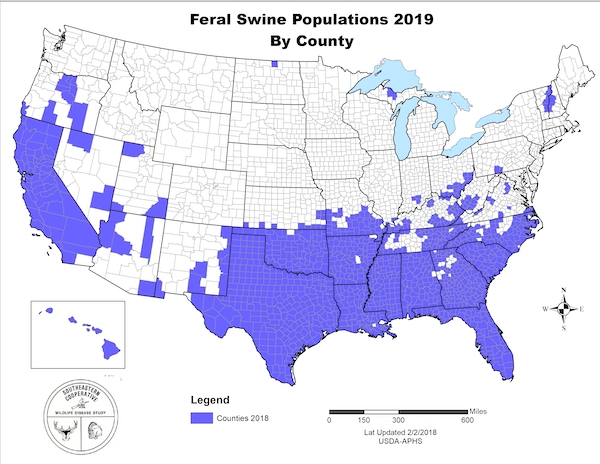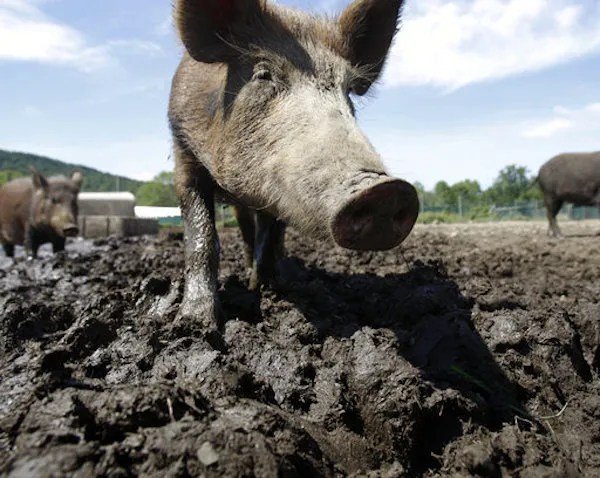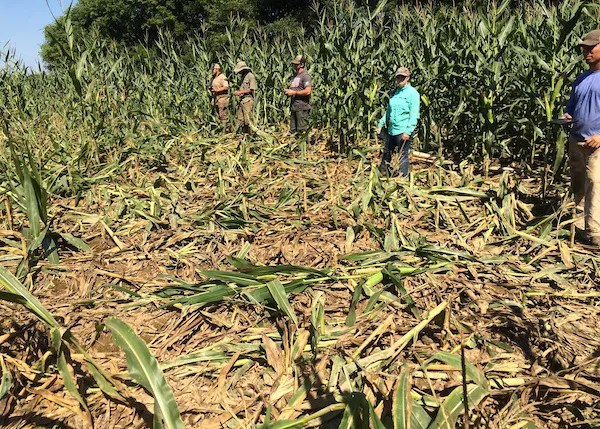
America’s feral hog population is approaching 9 million and rising fast in what some call a “feral swine bomb.” The invasive beasts are present in at least 39 states and responsible for some $2.5 billion in damage each year. Not only that, they are a breeding ground for dozens of parasites and diseases. That includes African swine fever (ASF), which in Germany has led to a collapse in the country’s pork exports after the disease was found in their wild boar population.
In 2018, the USDA estimated the U.S. wild pig population at closer to 6 million, which helps explain why people refer to their ballooning numbers as a “bomb.” Dale Nolte, manager of the National Feral Swine Damage Management Program at the U.S. Department of Agriculture explains, “They multiply so rapidly. To go from a thousand to two thousand, it’s not a big deal. But if you’ve got a million, it doesn’t take long to get to 4 [million], then 8 million.”
America’s wild pigs are one part European wild boar and one part domestic breeds. Also called feral swine, early explorers and settlers first brought the animals to the United States in the 1500s as a source of food. Subsequent introductions of other wild boar species and interbreeding with our own escaped or released domestic swine have resulted in what some experts call “super pigs.”
The domestic side of the species’ gene pool helps boost its reproductive capacity, having been bred to remain fertile year-round and produce large litters. According to the Texas Parks and Wildlife Department (TPWD), the gestation period for feral hogs is around 115 days, with an average litter size of four to six hogs, but under good conditions can reach 10 to 12 young. Genes from wild boar add traits like heavy fur that help them survive harsh conditions. Wild pigs are also highly intelligent with a keen sense of smell. Add to all that the fact that these super pigs have few natural predators and it becomes clear why alarm bells are going off.
Management programs exist but as the escalating population numbers show, those efforts are failing. Texas currently spends more than $4 million annually on control efforts that experts say have no hopes of curbing the population explosion. The USDA has a $20 million feral swine-management program. Still, “The efforts to deal with them are about 1 percent of what’s currently needed,” according to Ryan Brook, a University of Saskatchewan biologist who researches wild pigs. He says the North American wild pig populations, in general, are out of control. In Canada, Brooks predicts feral pigs will occupy 386,000 square miles across the country by the end of 2020, while currently expanding at about 35,000 square miles a year.
A paper just published in the Journal of Animal Science, “Perspectives on the past, present, and future of feral swine disease surveillance in the United States,” comes from a working group established by the USDA to address the feral swine problem. In describing the importance of feral swine management, authors write, “The rapid global spread of ASF (African swine fever) virus in the last 1-2 years in both domestic and wild swine has highlighted the need for vigilant surveillance and demonstrated the devastating impact of a foreign animal disease due to mortality, production losses and restrictions to international trade.” The full report is available HERE.
Some states like Texas and California encourage recreational hunting as a method to help curb wild pig numbers but Montana takes the opposite approach, which earlier referenced Atlantic article highlights (available HERE ). In fact, it was wild boar hunting that first raised concerns about the invasive species presence in the state. The Montana Department of Livestock in 2013 learned of three boar brought in from Texas for an organized hunt. Knowing the threat other states faced from the invasive animals, the agency moved swiftly to have the Texas imports killed. Research in Colorado that found hunted pigs can increase their traveling range to more than 100 miles convinced the state in 2015 to pass a law banning the hunting of feral swine, as well as owning or transporting them.
Montana’s ultimate goal is to keep the state 100% free from wild pigs. The success of those efforts so far is due in part to the state’s extensive public education program, run by the Montana Department of Livestock in partnership with the Montana Invasive Species Council. A newly launched program, “Squeal on Pigs” – borrowed from similar campaigns in Washington and Oregon – encourages residents to call a 24-hour hotline with sightings so staff could trap and kill the creatures. Learn more about that program HERE. The USDA’s Feral Swine resource page is HERE and has information and links to numerous other resources.











